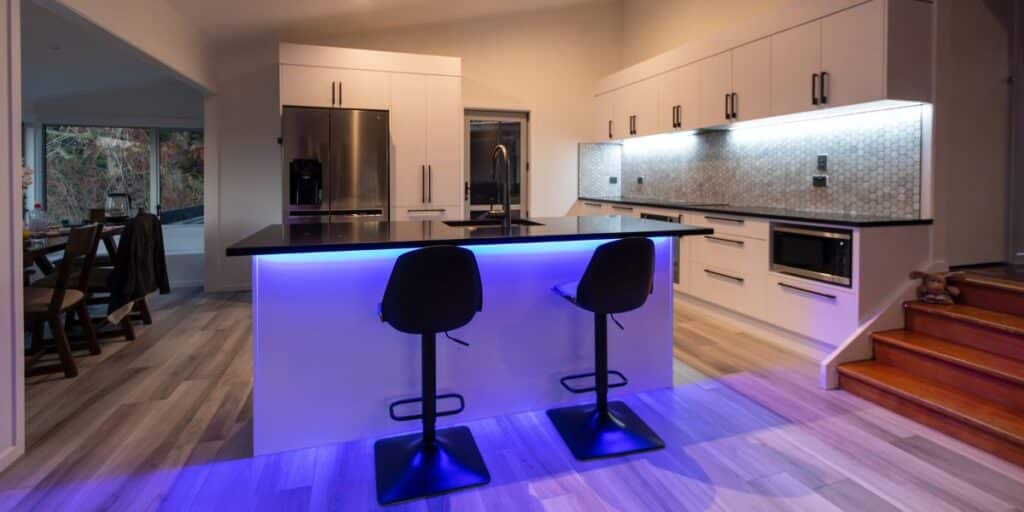Understanding the Benefits of LED Lighting
LED lights are the latest advancement in the lighting industry. There’s a number of benefits of LED lighting over regular light bulbs.
In this post we’ll go through all the advantages of LED lights and what makes LEDs a good choice for your household.
What is LED lighting?
LED is an abbreviation for light emitting diode. An LED is a semiconductor device that generates light through a process known as electroluminescence. When an electric current is passed through the semiconductor material of a diode, it emits visible light.
The first LEDs were developed in the 60s and were mostly used as indicator lights for circuit boards and have come a long way since then. Currently, we’re operating with third-generation LED lights. Those last a lot longer, are more durable, perform better and offer better energy-efficiency than any other source of lighting.
Advantage of LED lights
There are many benefits of LED lighting for both industrial and residential buildings. From energy-efficiency to environmental impact. Here are some of the main advantages of LED lights:
Longer life
Average incandescent bulbs have a lifespan of around a thousand hours, compared to LED lights which are much longer. An average LED light can last between 50,000 to up to 100,000 hours, depending on how you use it. This means that an LED bulb can last you anywhere from six to 12 years, which is 40 times longer than the regular light bulbs. LED lights will also last you about two to four times longer than fluorescent or metal halide lights.
This means that in the long run LED lights can save you money on replacement costs as well as maintenance.
Energy efficient
Another one of the great benefits of LED lighting is its energy efficiency. LED lights produce more useful lumens than any other lighting technology. If you replaced all the lights around your house with LEDs you could see an up to 90% overall improvement in energy efficiency, depending on the type of lights you’re replacing as well as what kind of LED lights you’re installing. This improvement is directly reflected as savings on your electricity bill.

Design flexibility
LED diodes are very small in size, which means they can be used in almost any setting. If combined in bunches they create a traditional LED bulb. They can also be stringed together to create a strip of lights. This flexibility in design makes LED lights suitable for every room around the house, from the kitchen or the bathroom, to the bedroom and even as decorative table lights in the living room.
Dimming capabilities
LED lights perform well at almost any power percentage, from 5% to 100%, while other light sources perform less efficiently when dimmer or cannot be dimmed at all. The opposite is true for LEDs as they are more efficient when using less than full power. This leads to other benefits as a result such as increased lifespan and reduced energy costs.
It’s important to note that LED lights need hardware specific to their technology for dimming.
Colour range
Regular incandescent bulbs require filters or gels, which can burn or fade over time, to create different colours. LED lights, on the other hand, come in a wide range of colours and temperatures without the use of external materials. With LEDs it’s the diode itself that is changed to alter the colour of the emitted light which allows for durability as well as wider range of colours.
Directionality
Conventional lighting technology emits light in a 360° radius around the source, which means that if you want to illuminate only a certain area, you’ll have to buy accessories to channel the light in the desired direction. LEDs in comparison only light up an area of 180° which makes them the perfect solution if you want to create a modest atmosphere by backlighting your TV or have artwork which you want to put a spotlight on.
Whatever your needs might be, IOS Lighting Northampton has the perfect option for you, from pendant lights to wall lights. If you have any questions you can contact us or visit our showroom!
